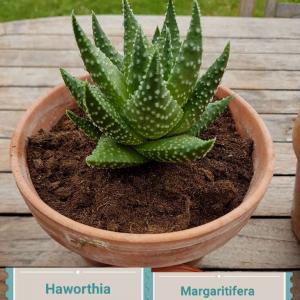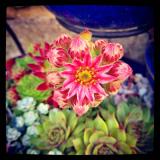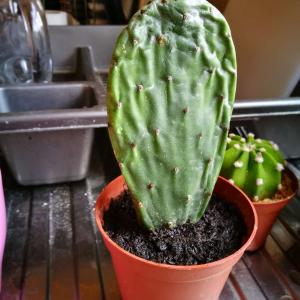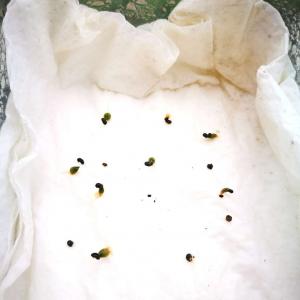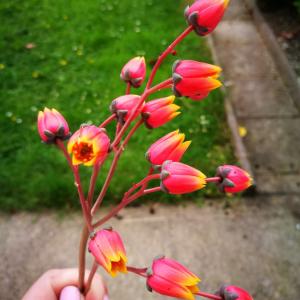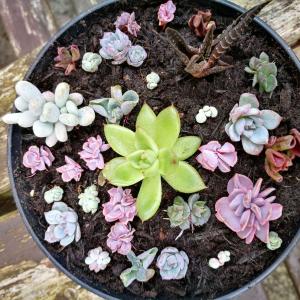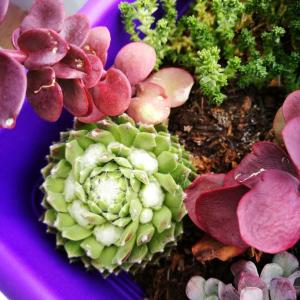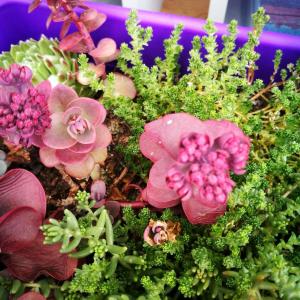文章
Dummer. ゛☀
2017年07月15日

Family - Elaeagnaceae
Stems - Commonly multiple from the base but sometimes with a single trunk, to +5m tall, erect, woody. Twigs densely lepidote, silvery. New seasons growth shiny silver because of dense scales.

Leaves - Alternate, petiolate. Petioles to -1cm long, densely lepidote, with a shallow adaxial groove. Blades elliptic to lanceolate, to 8cm long, -2.5cm broad, deep green adaxially and sparsely lepidote, slivery green and densely lepidote abaxially, rounded to acute at the apex.
Inflorescence - Axillary umbels of 2-7 flowers. Pedicels to 5mm long in flower (to 12mm in fruit), densely lepidote.

Flowers - Petals absent. Sepals 4, united into a 4-lobed tube. Tube to +1cm long, whitish to pale yellow, drying yellow, 4-angled in cross section, densely lepidote. Lobes ovate, acute, 4-5mm long and broad, pubescent and white internally, lepidote externally. Stamens 4, adnate at the apex of the corolla tube. Filaments wanting. Anthers yellow, drying brown, to 2mm long. Style 1, pale green, stellate pubescent, exserted from the perianth, uncinate at the apex. Calyx tube with nectaries at the base internally. Ovary inferior, with 1 ovule, unilocular. Flowers very fragrant. Fruits globose to ovoid, 3-9mm in diameter, red.
Flowering - April - May.

Habitat - Cultivated and escaped to waste ground, roadsides, fencerows, thickets.
Origin - Native to Asia.
Other info. - This weedy species can be found escaped in a handful of Missouri counties but it will almost certainly expand its range with time. The plant is listed as a noxious weeds in many parts of North America. The fruits of this shrubby tree are quite edible and many animals help spread the seeds into the wild. The roots have nitrogen fixing nodules that enable the plant to survive in weak soils.
There are a few different species of Elaeagnus in Missouri. All are introduced and invasive.
Stems - Commonly multiple from the base but sometimes with a single trunk, to +5m tall, erect, woody. Twigs densely lepidote, silvery. New seasons growth shiny silver because of dense scales.

Leaves - Alternate, petiolate. Petioles to -1cm long, densely lepidote, with a shallow adaxial groove. Blades elliptic to lanceolate, to 8cm long, -2.5cm broad, deep green adaxially and sparsely lepidote, slivery green and densely lepidote abaxially, rounded to acute at the apex.
Inflorescence - Axillary umbels of 2-7 flowers. Pedicels to 5mm long in flower (to 12mm in fruit), densely lepidote.

Flowers - Petals absent. Sepals 4, united into a 4-lobed tube. Tube to +1cm long, whitish to pale yellow, drying yellow, 4-angled in cross section, densely lepidote. Lobes ovate, acute, 4-5mm long and broad, pubescent and white internally, lepidote externally. Stamens 4, adnate at the apex of the corolla tube. Filaments wanting. Anthers yellow, drying brown, to 2mm long. Style 1, pale green, stellate pubescent, exserted from the perianth, uncinate at the apex. Calyx tube with nectaries at the base internally. Ovary inferior, with 1 ovule, unilocular. Flowers very fragrant. Fruits globose to ovoid, 3-9mm in diameter, red.
Flowering - April - May.

Habitat - Cultivated and escaped to waste ground, roadsides, fencerows, thickets.
Origin - Native to Asia.
Other info. - This weedy species can be found escaped in a handful of Missouri counties but it will almost certainly expand its range with time. The plant is listed as a noxious weeds in many parts of North America. The fruits of this shrubby tree are quite edible and many animals help spread the seeds into the wild. The roots have nitrogen fixing nodules that enable the plant to survive in weak soils.
There are a few different species of Elaeagnus in Missouri. All are introduced and invasive.
0
0
文章
Dummer. ゛☀
2017年07月15日

Family - Ebenaceae
Stems - Twigs pubescent, with reddish-brown solid pith. New season's growth densely pubescent, green, terete, with short and long hairs. Mature bark blocky with square blocks. Tree to 20m tall but typically seen smaller and more shrubby.
Leaves - Alternate, petiolate. Petioles to +2cm long, densely pubescent with short and long hairs, light green. Blades to +/-15cm long, +/-8cm broad, ovate, acute, deep shiny green and glabrous above, dull-light green and pubescent below, entire. Main lateral veins expressed below. Leaves of the inflorescence reduced.
Inflorescence - Paired or triple axillary flowers on the new season's growth. Peduncle to +3cm long, densely pubescent. Pedicels to +3cm long, densely pubescent with short and long hairs. Central flower of the inflorescence flowering first.
Flowers - Staminate - Corolla tube white, glabrous internally, mostly glabrous externally but pubescent on the lobes, 1cm long, 7-8mm broad. Lobes recurved, yellowish, 3mm long, 4-5mm broad, rounded. Stamens many (+/-16) adnate at the base of the corolla tube, erect, included. Filaments white, short, to 1mm long, antrorse pubescent at the apex. Anthers 4-5mm long, +1mm broad, brown. A vestigal pistil is surrounded by the stamens in the staminate flowers. Calyx 4-lobed, green, appressed to the corolla tube. Lobes 3mm long, +2mm broad at the base, acute, pubescent externally, mostly glabrous internally except near the apex. Pistillate flowers not seen but larger than the staminate. Fruits globose, 2-6cm in diameter, orange, frequently glaucous, with the persistent calyx. Seeds few to many, strongly compressed, brown.
Flowering - May - June.
Habitat - Dry open and rocky woods, glade edges, prairies, thickets, valleys along streams, old fields, clearings.
Origin - Native to U.S.
Other info. - This species can be found throughout much of Missouri but is mostly absent from the northern portion of the state. The tree is easy to identify becasue of its blocky bark which occurs very early in the plants growth. The sweet, edible fruits are reputed to be best only after they have been through a freezing period. The fruits don't keep long after being picked but can remain on the trees a long time and through much of the winter.
The wood of Persimmon is very hard and was traditionally used to make golf-club heads. It can also be turned into tool handles and other small objects. Pool cues are also frequently made from this wood.
Stems - Twigs pubescent, with reddish-brown solid pith. New season's growth densely pubescent, green, terete, with short and long hairs. Mature bark blocky with square blocks. Tree to 20m tall but typically seen smaller and more shrubby.

Leaves - Alternate, petiolate. Petioles to +2cm long, densely pubescent with short and long hairs, light green. Blades to +/-15cm long, +/-8cm broad, ovate, acute, deep shiny green and glabrous above, dull-light green and pubescent below, entire. Main lateral veins expressed below. Leaves of the inflorescence reduced.
Inflorescence - Paired or triple axillary flowers on the new season's growth. Peduncle to +3cm long, densely pubescent. Pedicels to +3cm long, densely pubescent with short and long hairs. Central flower of the inflorescence flowering first.

Flowers - Staminate - Corolla tube white, glabrous internally, mostly glabrous externally but pubescent on the lobes, 1cm long, 7-8mm broad. Lobes recurved, yellowish, 3mm long, 4-5mm broad, rounded. Stamens many (+/-16) adnate at the base of the corolla tube, erect, included. Filaments white, short, to 1mm long, antrorse pubescent at the apex. Anthers 4-5mm long, +1mm broad, brown. A vestigal pistil is surrounded by the stamens in the staminate flowers. Calyx 4-lobed, green, appressed to the corolla tube. Lobes 3mm long, +2mm broad at the base, acute, pubescent externally, mostly glabrous internally except near the apex. Pistillate flowers not seen but larger than the staminate. Fruits globose, 2-6cm in diameter, orange, frequently glaucous, with the persistent calyx. Seeds few to many, strongly compressed, brown.

Flowering - May - June.
Habitat - Dry open and rocky woods, glade edges, prairies, thickets, valleys along streams, old fields, clearings.
Origin - Native to U.S.
Other info. - This species can be found throughout much of Missouri but is mostly absent from the northern portion of the state. The tree is easy to identify becasue of its blocky bark which occurs very early in the plants growth. The sweet, edible fruits are reputed to be best only after they have been through a freezing period. The fruits don't keep long after being picked but can remain on the trees a long time and through much of the winter.
The wood of Persimmon is very hard and was traditionally used to make golf-club heads. It can also be turned into tool handles and other small objects. Pool cues are also frequently made from this wood.
0
0
文章
Dummer. ゛☀
2017年07月15日

Family - Convolvulaceae
Flowering - April - October.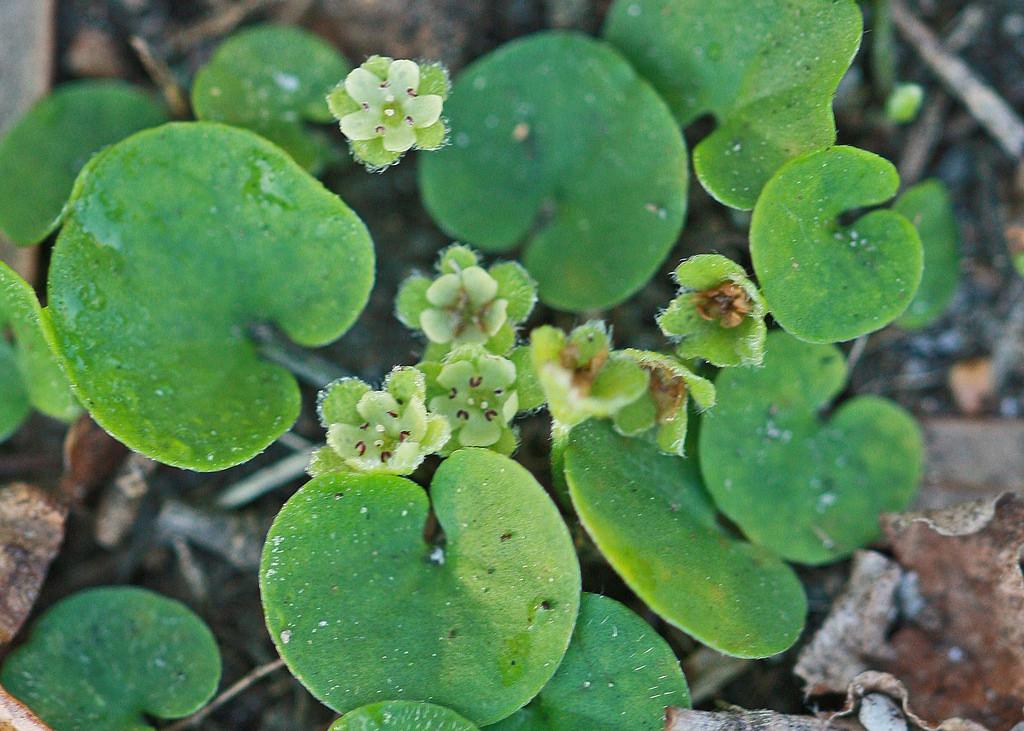
Habitat - Lawns, fields, roadsides.
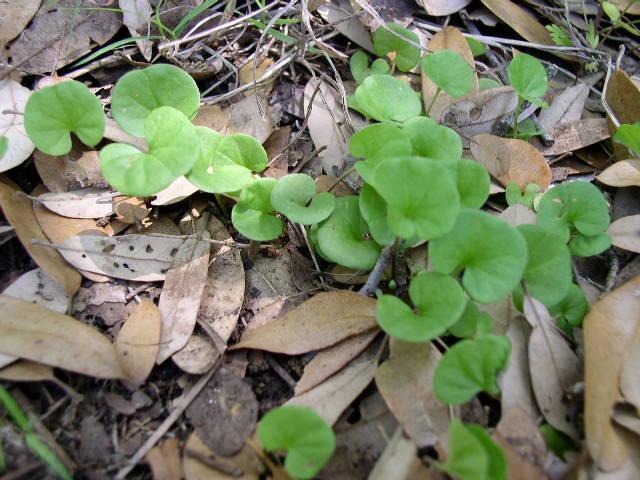
Origin - Native to U.S.
Other info. - This weedy little species is a fairly new addition to the Missouri flora and has only been reported from two southern Missouri counties. The plant is much more common in the southeastern U.S.
This species is easy to identify becasue of its creeping stems, reniform leaves, and small flowers.
Flowering - April - October.

Habitat - Lawns, fields, roadsides.

Origin - Native to U.S.
Other info. - This weedy little species is a fairly new addition to the Missouri flora and has only been reported from two southern Missouri counties. The plant is much more common in the southeastern U.S.
This species is easy to identify becasue of its creeping stems, reniform leaves, and small flowers.

0
0



